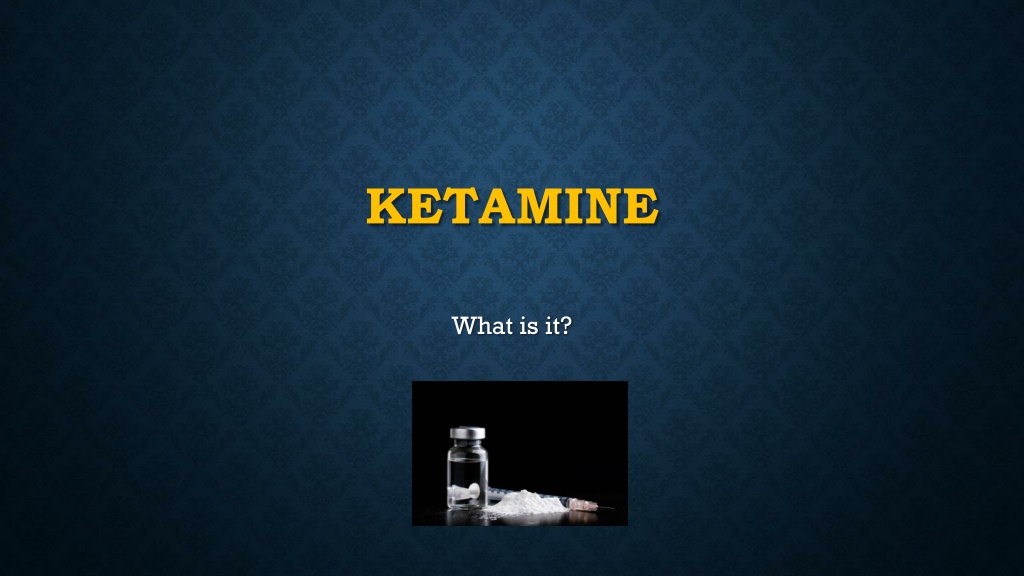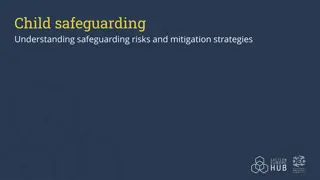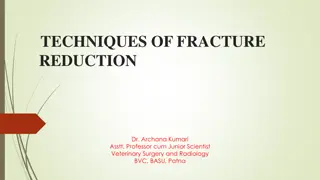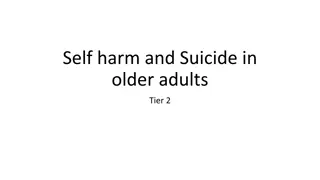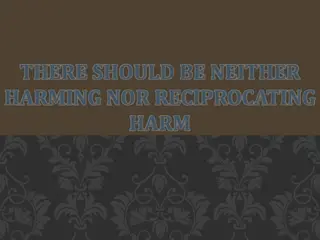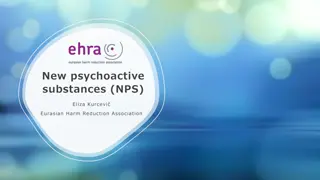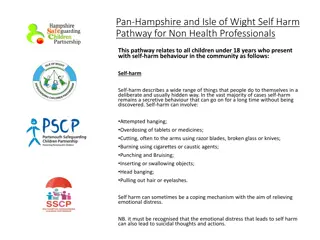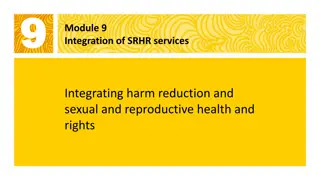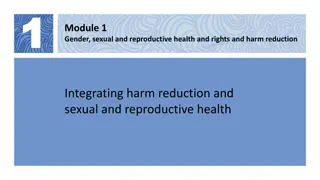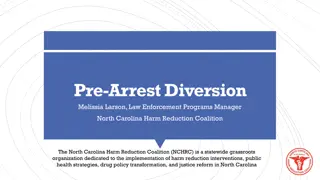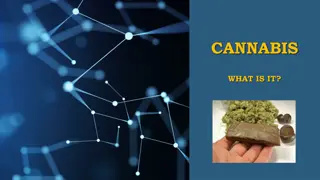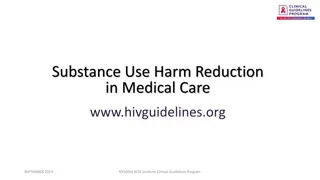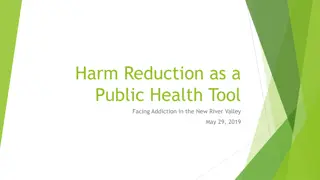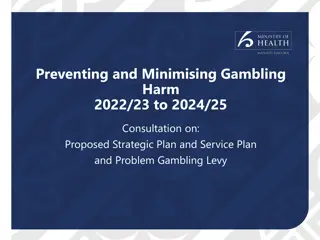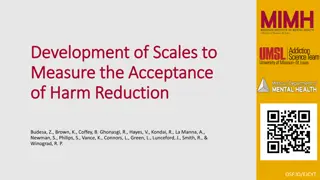Understanding Ketamine: Effects, Risks, and Harm Reduction
Ketamine is a dissociative and psychedelic drug that can induce hallucinations and detachment from reality. It is used as an anaesthetic but can lead to short-term effects like euphoria and detachment, with long-term risks including depression and bladder damage. Mixing with other substances poses additional dangers. Harm reduction strategies advise against its use, especially in risky situations.
Download Presentation

Please find below an Image/Link to download the presentation.
The content on the website is provided AS IS for your information and personal use only. It may not be sold, licensed, or shared on other websites without obtaining consent from the author. Download presentation by click this link. If you encounter any issues during the download, it is possible that the publisher has removed the file from their server.
E N D
Presentation Transcript
KETAMINE What is it?
KETAMINE Is a dissociative and psychedelic drug. People feel detached from themselves but can also experience a trip which causes people to experience visual and auditory hallucinations. Hallucinations can result in accidents as people can see or hear things that aren t there. Ketamine is used as an anaesthetic in humans and animals. Produces feelings of euphoria, stimulation, relaxation, detachment and psychedelic symptoms. It is sold as a grainy, off-white powder. It can come in pills and when used medically, it is typically in liquid form.
SHORT-TERM EFFECTS In powder form, it can be snorted, added to drinks or swallowed in paper bombs. It is less often swallowed and not recommended to inject as it is an extra risk. The person s individual mental and physical health will impact its effects. The setting, level of dosing and potency will also have various effects based on individual use. Ketamine is dose dependent. Higher doses are associated with increased detachment or dissociative behaviours. Purity varies even in the same batch so challenging to determine dosage.
SHORT-TERM EFFECTS CONTINUED Feeling chilled, happy, relaxed. Some people feel energised and stimulated. You can experience an out of body or sense of detachment. May experience hallucinations. Some experience stomach cramps. May experience nausea or vomiting, particularly if used with alcohol. Can affect balance and coordination.
LONG-TERM EFFECTS AND OTHER RISKS Frequent use can leave a person feeling depressed or very low. Content or purity cannot be established. Purity can vary even in the same batch. Emerging evidence shows frequent use leads to bladder damage. Symptoms may include cramps, stomach pain, difficulty urinating, urinating often and blood in the urine. Using ketamine with other substances increases risks. Using with other stimulant drugs, such as cocaine, MDMA or speed, puts extra strain on your organs. If used with other depressant type drugs, such as benzodiazepines or opioids, can slow down breathing and heart rate. Ketamine can make people feel sick. If someone is sleeping or unable to move, ensure they are in the recovery position or on their side in case they vomit and choke.
OTHER RISKS CONTINUED Do not put an unwell person or someone with stomach cramps in a bath to wake them or relieve cramps. The risk of drowning is high. Becoming sick or vomiting can impact or make you lose other medications you are taking, such as the contraceptive pill. Taking ketamine with cannabis, LSD or other psychedelic drugs can make the symptoms difficult to manage.
HARM REDUCTION It is always safest not to use. Avoid taking alone or in risky settings. Think about your current mindset and avoid if feeling low. Start slow and go low. Take note of how you are feeling when you first use. Try to measure what you will take and only bring that amount with you to lower the risk of overdosing. Eat at least two hours prior to use. Avoid taking with other substances.
HARM REDUCTION Avoid sharing snorting tools and get tested regularly for blood borne viruses. Reduce the amount you use and how often you use it. Look out for bladder issues. Look out for the signs of overdose. If you think someone is overdosing, put them in the recovery position or on their side. Call medical help immediately 999/112. Stay with the person until help arrives. Do not give the person any food, drink or other drugs while waiting for help to arrive.
SERVICES If you would like to reduce or stop taking ketamine, seek out your local services. Services map: https://www.drugsandalcohol.ie/services_map www.drugs.ie www.tiglin.ie cris@mqi.ie livinglifecounselling.com
SOURCES/REFERENCES HSE drugs.ie (n.d.) Ketamine. https://www.drugs.ie/drugtypes/drug/ketamine[Accessed on 08/01/24] Images free to use and share commercially: Google.ie For more information follow the link below; HRB National Drugs Library (2024) Drugs and alcohol factsheets
